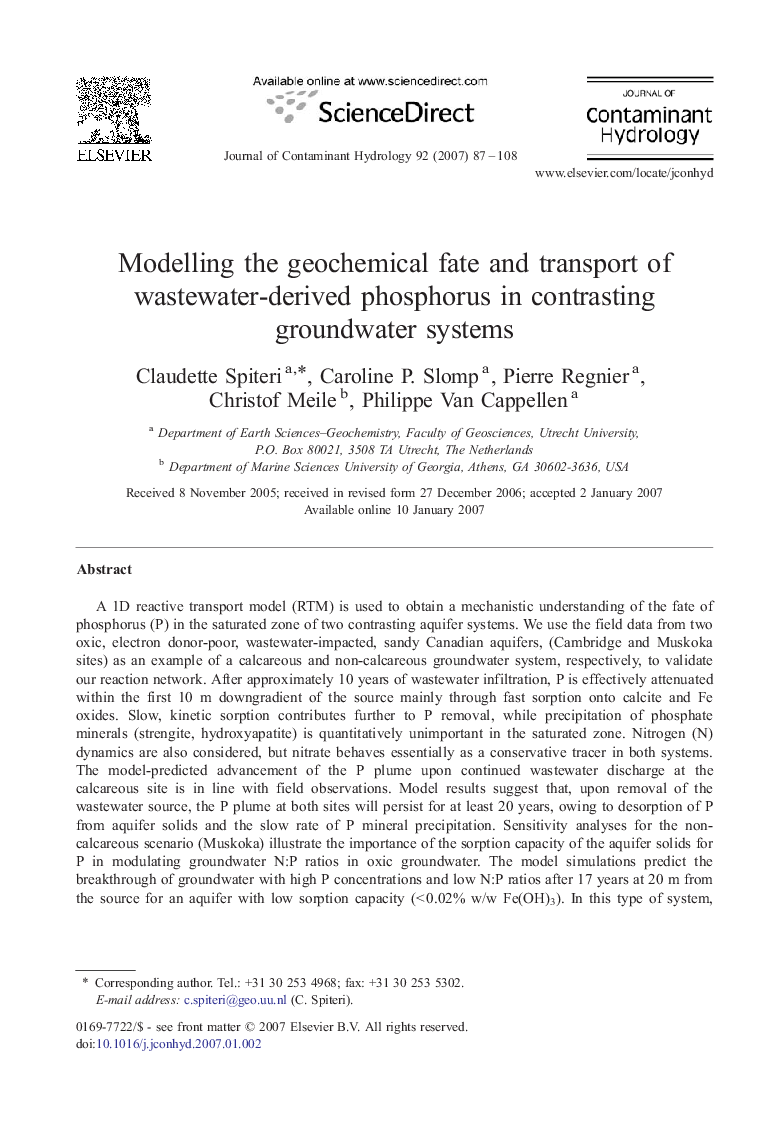| Article ID | Journal | Published Year | Pages | File Type |
|---|---|---|---|---|
| 4547569 | Journal of Contaminant Hydrology | 2007 | 22 Pages |
A 1D reactive transport model (RTM) is used to obtain a mechanistic understanding of the fate of phosphorus (P) in the saturated zone of two contrasting aquifer systems. We use the field data from two oxic, electron donor-poor, wastewater-impacted, sandy Canadian aquifers, (Cambridge and Muskoka sites) as an example of a calcareous and non-calcareous groundwater system, respectively, to validate our reaction network. After approximately 10 years of wastewater infiltration, P is effectively attenuated within the first 10 m downgradient of the source mainly through fast sorption onto calcite and Fe oxides. Slow, kinetic sorption contributes further to P removal, while precipitation of phosphate minerals (strengite, hydroxyapatite) is quantitatively unimportant in the saturated zone. Nitrogen (N) dynamics are also considered, but nitrate behaves essentially as a conservative tracer in both systems. The model-predicted advancement of the P plume upon continued wastewater discharge at the calcareous site is in line with field observations. Model results suggest that, upon removal of the wastewater source, the P plume at both sites will persist for at least 20 years, owing to desorption of P from aquifer solids and the slow rate of P mineral precipitation. Sensitivity analyses for the non-calcareous scenario (Muskoka) illustrate the importance of the sorption capacity of the aquifer solids for P in modulating groundwater N:P ratios in oxic groundwater. The model simulations predict the breakthrough of groundwater with high P concentrations and low N:P ratios after 17 years at 20 m from the source for an aquifer with low sorption capacity (< 0.02% w/w Fe(OH)3). In this type of system, denitrification plays a minor role in lowering the N:P ratios because it is limited by the availability of labile dissolved organic matter.
